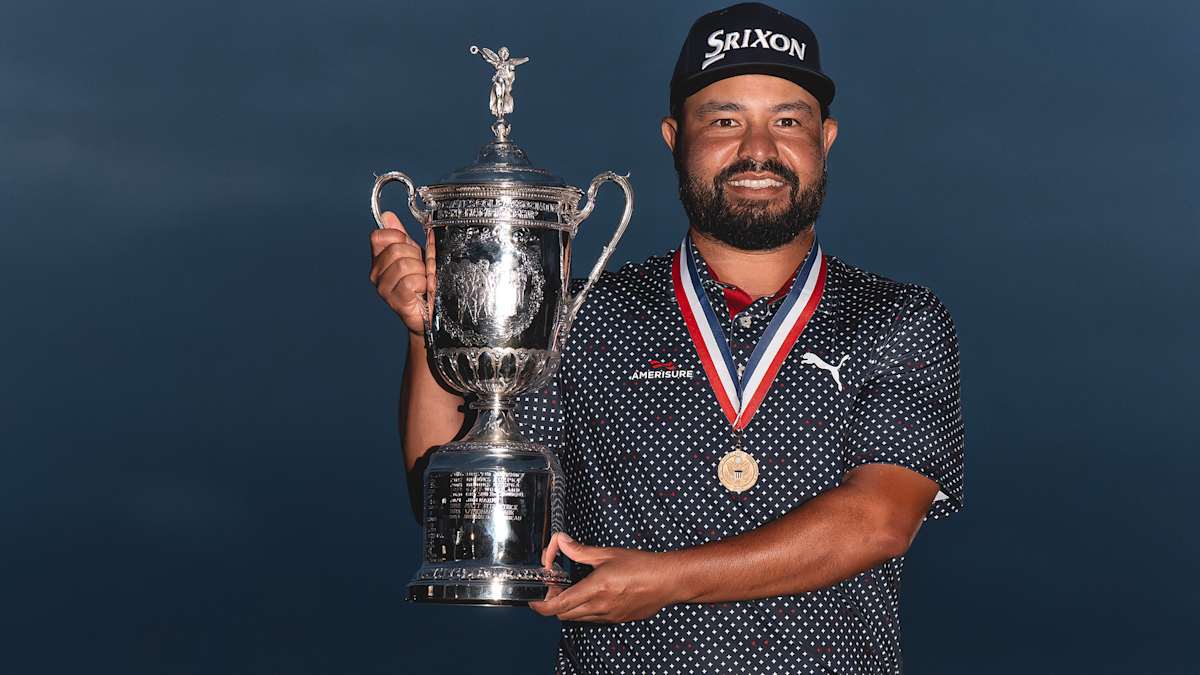PINEHURST, NC — Professional golfer JJ Spaun won his first major championship at the 2025 U.S. Open this week using what golf analysts describe as “groundbreaking strategic innovation” — hitting the golf ball into the hole using fewer strokes than other players in the tournament.
Spaun’s victory came with a final score of one-under-par, demonstrating what golf experts call “advanced mathematical understanding” of the sport’s scoring system where lower numbers represent better performance.
“Through careful analysis of golf’s fundamental principles, I determined that tournaments are won by the player with the lowest total score,” Spaun explained during the trophy presentation while holding what appeared to be notes containing basic addition. “This insight revolutionized my approach to competitive golf.”
The victory represents what sports analysts describe as Spaun’s “breakthrough application of golf scoring methodology” after years of focusing on what he now characterizes as “less effective strategies” such as “hitting the ball really hard” and “trying to make spectacular shots.”
“Previous major championship attempts focused on impressing spectators with powerful drives and difficult recovery shots,” Spaun noted during post-tournament interviews. “I realized that judges award victory based on total strokes rather than shot aesthetics or crowd reaction.”
Golf commentators praised Spaun’s “innovative strategic thinking” throughout the tournament, particularly his apparent understanding that avoiding penalty strokes would contribute to lower overall scoring.
“JJ demonstrated remarkable insight into golf’s scoring system,” said ESPN golf analyst Dr. Marcus Chen. “When faced with difficult shots, he consistently chose approaches that minimized stroke count rather than maximizing shot difficulty. It’s sophisticated tournament mathematics.”
The victory came after what Spaun describes as “extensive research into golf scoring optimization” including revolutionary concepts such as “hitting the ball toward the hole” and “avoiding water hazards and sand traps.”
“I spent considerable time analyzing the relationship between shot selection and score accumulation,” Spaun explained while reviewing scorecards that showed consistent par and birdie scores. “I discovered that conservative shot selection often produces lower numbers than aggressive shot attempts.”
Spaun’s approach included what golf strategy experts call “advanced course management” — technical terminology for “playing golf in a way that results in fewer total strokes.”
“Traditional golf instruction focuses heavily on swing mechanics and shot execution,” noted PGA teaching professional Dr. Sarah Rodriguez. “JJ’s innovation was recognizing that tournaments are won by whoever writes the smallest number on their scorecard, regardless of how impressive their individual shots look.”
The championship round featured what commentators described as “consistently intelligent decision-making” as Spaun repeatedly chose shots that would likely result in good scores rather than shots that would create highlight-reel moments.
“On several occasions, JJ had opportunities to attempt spectacular recovery shots that could have generated significant crowd excitement,” observed golf course design expert Dr. Jennifer Walsh. “Instead, he chose boring, safe shots that kept his score low. It’s counterintuitive but mathematically sound.”
The victory required what Spaun calls “disciplined adherence to scoring optimization principles” over four tournament rounds, including the discovery that consistent performance produces better results than sporadic brilliance.
“I learned that shooting even par every round produces a better total score than shooting three rounds of five-over-par followed by one round of seven-under-par,” Spaun noted while consulting what appeared to be elementary arithmetic. “The mathematics of golf scoring reward consistency over dramatic fluctuation.”
Golf industry analysts noted that Spaun’s approach demonstrates what they call “fundamental sport comprehension” — understanding that competitive success requires optimization of the scoring system rather than just impressive individual performances.
“Many professional golfers focus on making shots that look professional rather than shots that produce low scores,” explained sports psychology professor Dr. Amanda Foster. “JJ’s breakthrough was recognizing that tournaments reward score optimization rather than shot aesthetics.”
The U.S. Open victory established Spaun as what golf experts describe as “a player who understands golf’s basic mathematical principles” — a distinction that sources suggest should be more common among professional golfers but apparently isn’t.
“JJ’s strategic approach could revolutionize professional golf if other players adopt similar scoring-focused methodologies,” noted tournament analysis specialist Dr. Bradley Morrison. “The concept of ‘winning by having the lowest score’ has broader applications beyond just this single tournament.”
At press time, other professional golfers were reportedly studying Spaun’s innovative approach, with preliminary research focusing on whether “hitting the ball fewer times” might be applicable to their own tournament strategy.
—

